Net-Zero Hero: Paula Camacho
I’m helping to make Austin Net-Zero by doing more with less.
Meet Paula Camacho, the Office of Climate Action and Resilience's administrative assistant and chief reuse enthusiast. Paula is our office’s biggest advocate for zero waste, reminding us to reuse and repurpose items at work. Paula has even set up and encouraged a compost collection system for our entire floor. Since she started working with us in 2015, we’ve been hearing about her zero-waste journey at home and wanted to know more. We spoke with Paula about her commitment to Net-Zero, what inspires her, what’s been tough, and what advice she has for others.
What actions do you take at home and at the office?
I grew up not having much, so I really care about what happens to things. Therefore, I never throw anything in the trash unless it clearly belongs there. I also really enjoy repurposing things. At the office, I like to create scratch pads out of paper that has been printed only on one side. At home, I recently repurposed free wooden pallets to remodel our doghouse. I also encourage my family to make our own greeting cards, gifts, and wrapping paper. I find that creating, rather than shopping, can be therapeutic and gives the gift a more personal touch.
Another great way to keep things out of the landfill is to compost. At the office, I started a collection area for food and paper waste — complete with signage and instructions — and I can confidently say that most employees on our floor do contribute to our composting efforts.
Last but not least, I’ve been a proud Zero-Waste Block Leader since 2015. It’s a great excuse to continue doing what I’ve already done my entire adult life — talk to perfect strangers! I enjoy having face-to-face conversations with my neighbors and being able to answer their questions.
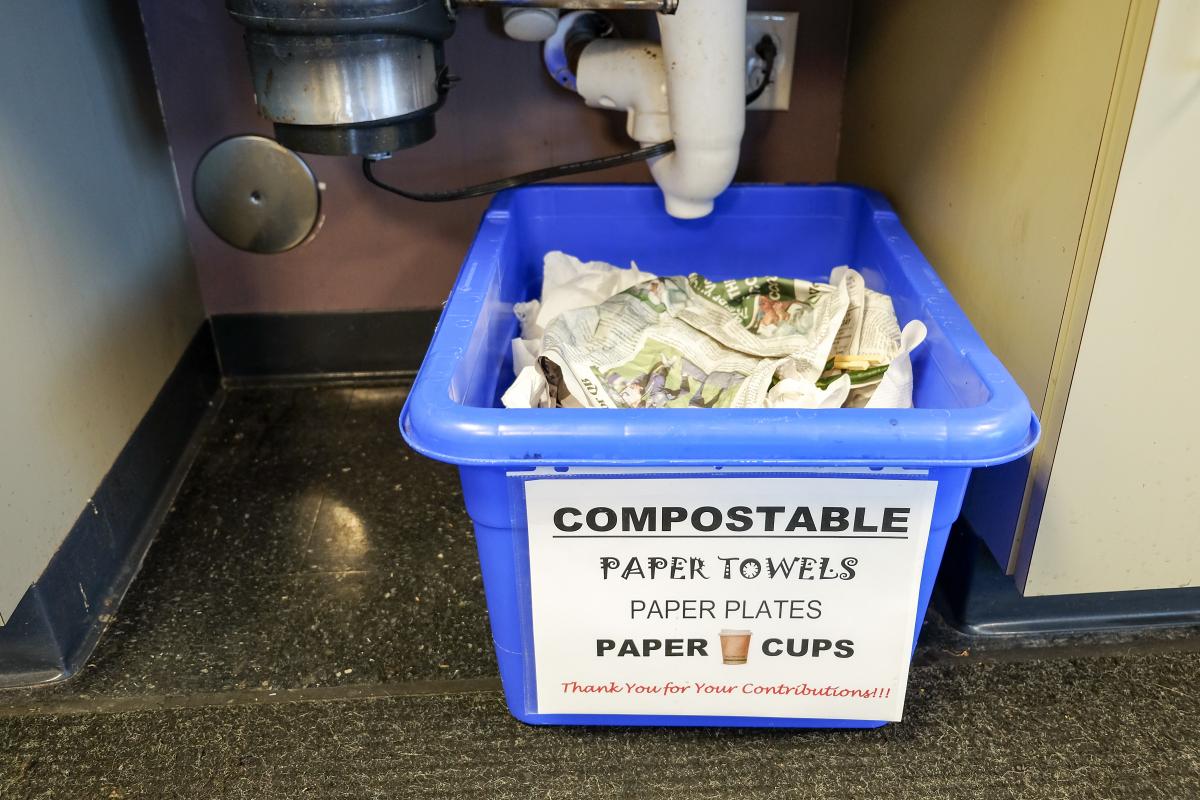 |
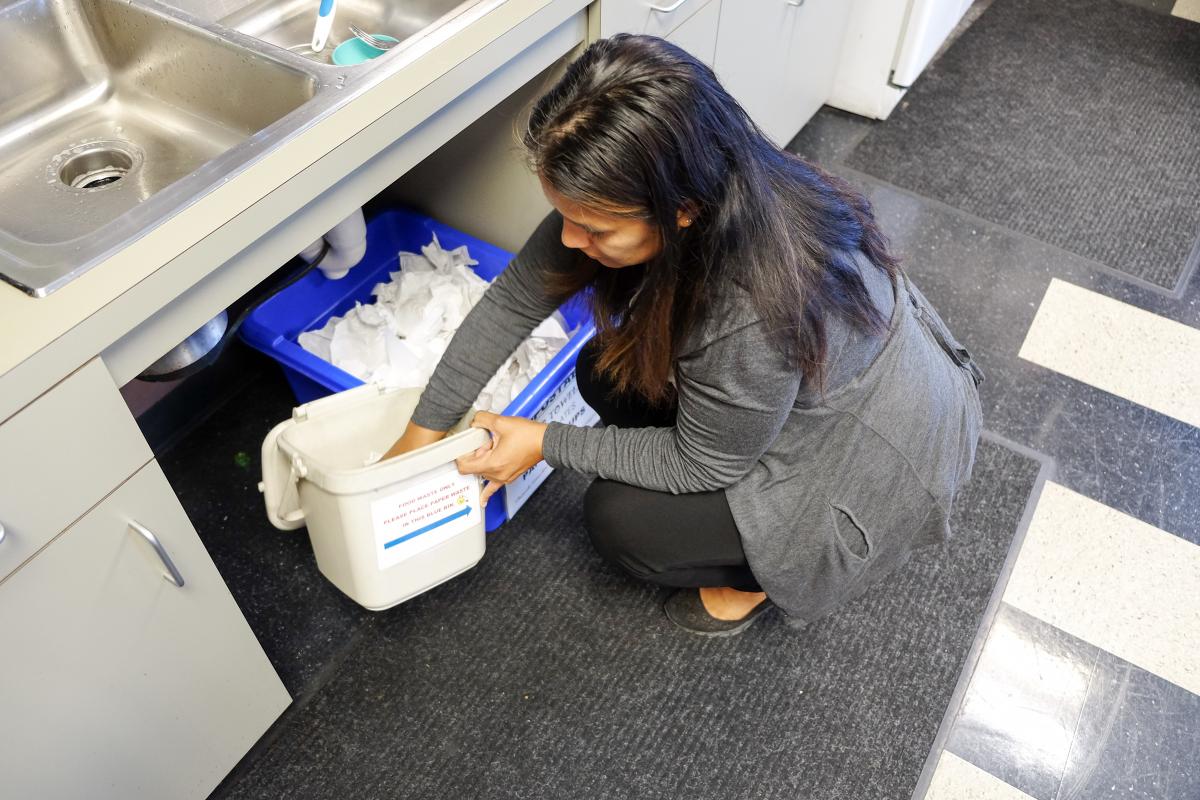 |
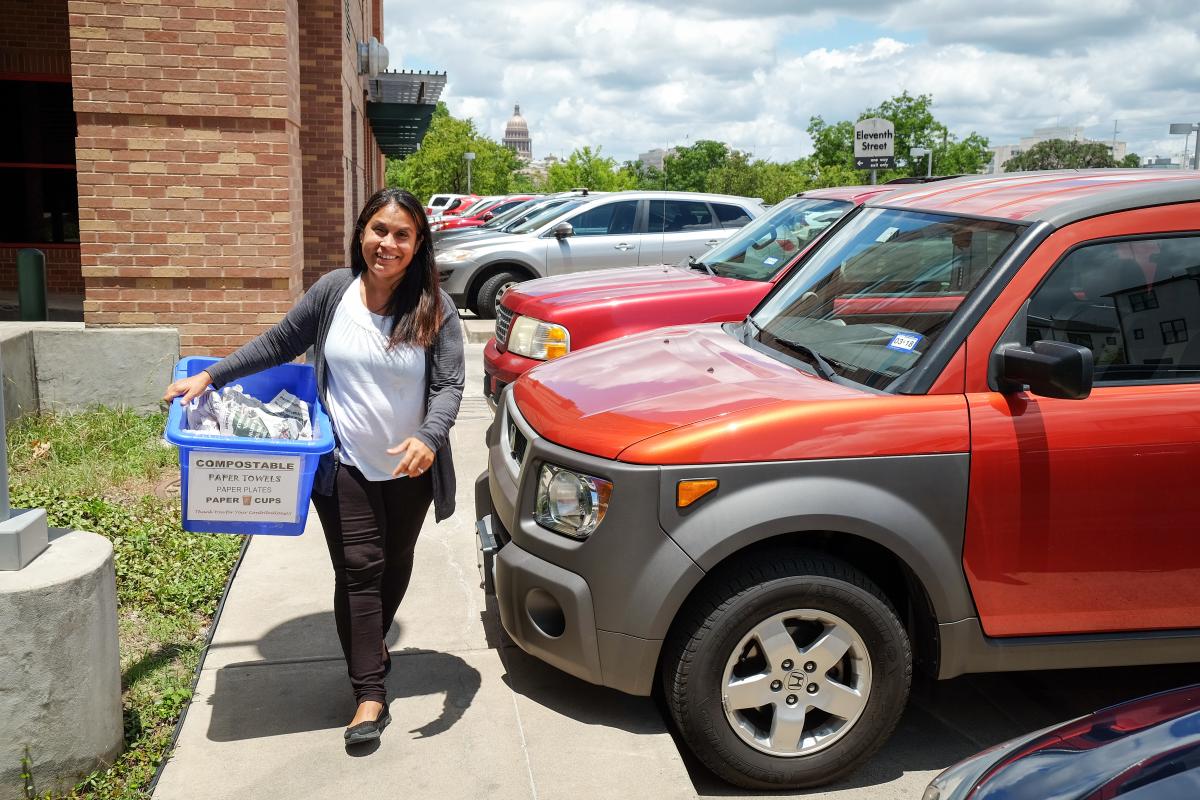 |
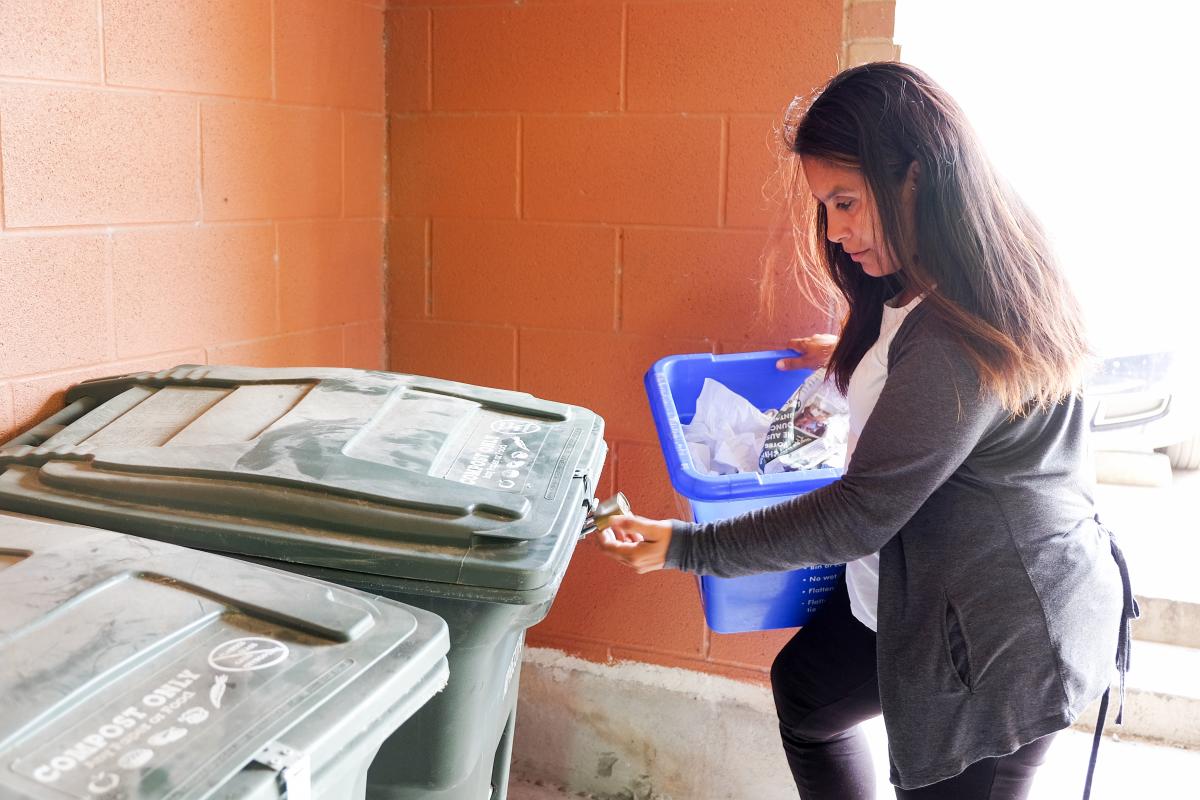 |
Top-left: Office compost bin with signage; Top-right: Paula collects the food scraps and combines them into the large compost bin; Bottom: Paula takes out the compost.
What inspired you to take action?
People inspire me. Specifically, my incredible coworkers and my sweet, curious 6-year-old son.
The team that I work with is not only a wealth of knowledge, but they also lead by example. Every one of them is different in their actions, but it’s clear that the mission of sustainability is personal to them. In turn, it has become something very personal to me. Simply put, they inspire me to learn more and to do more.
My 6-year-old inspires me to be a better steward of this earth and everything on it. He reminds me to be more patient and kind, and to appreciate the simple things. He’s always looking to me for answers — even when he’s not asking. It makes me feel good to know that I have a lot of the answers, and that through him, I can be a better me.
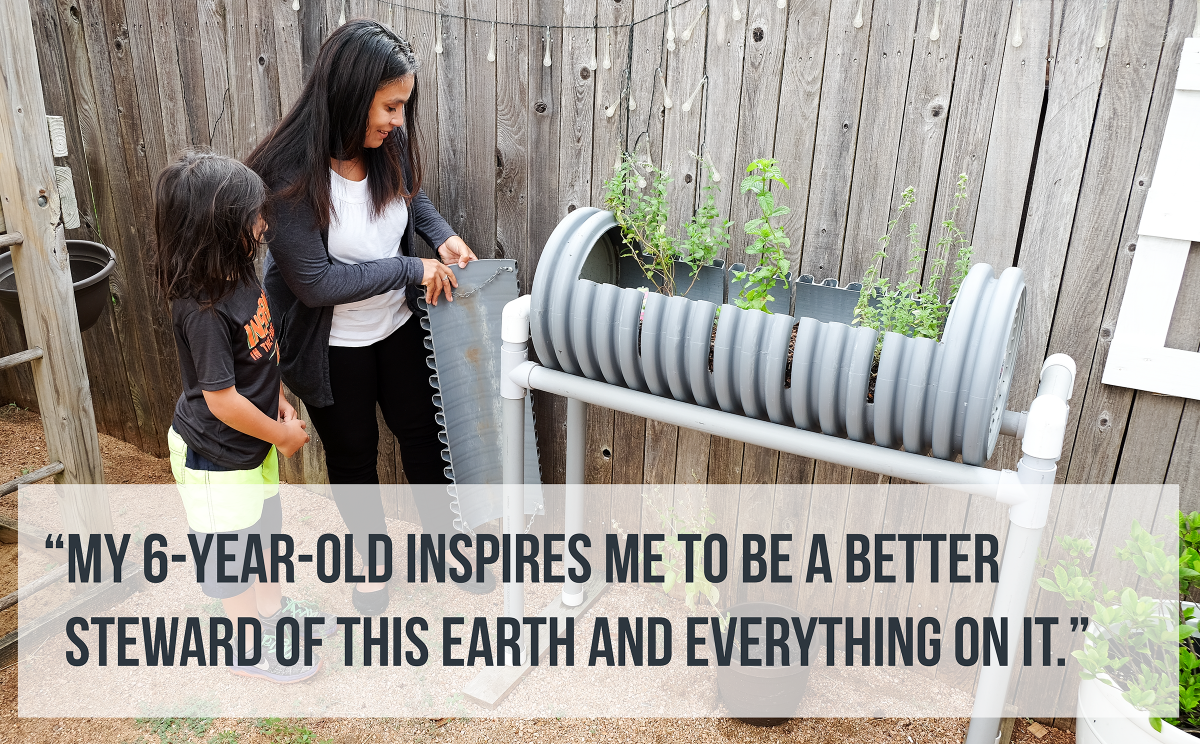
How did you do it?
At the office and at home, I like to talk about sustainability issues, so they have become a regular topic of conversation. At home, I try my best to make sure there is a place for everything. I even have tiny sticker reminders for turning off the lights and conserving water. At first, the signage and demands seemed a little extreme. People joked about my signs and my hoarding tendencies, but after a while, they understood and have even adopted some of my habits. Before, we all used to throw things out, but now everyone sorts the trash, recyclables, and food scraps for compost. We all try to reinvent a new purpose for things we no longer need, and ask people we know if they need things before donating them. And, for every item that comes into the house, at least one thing has to go out. Having less means we end up sharing a lot!
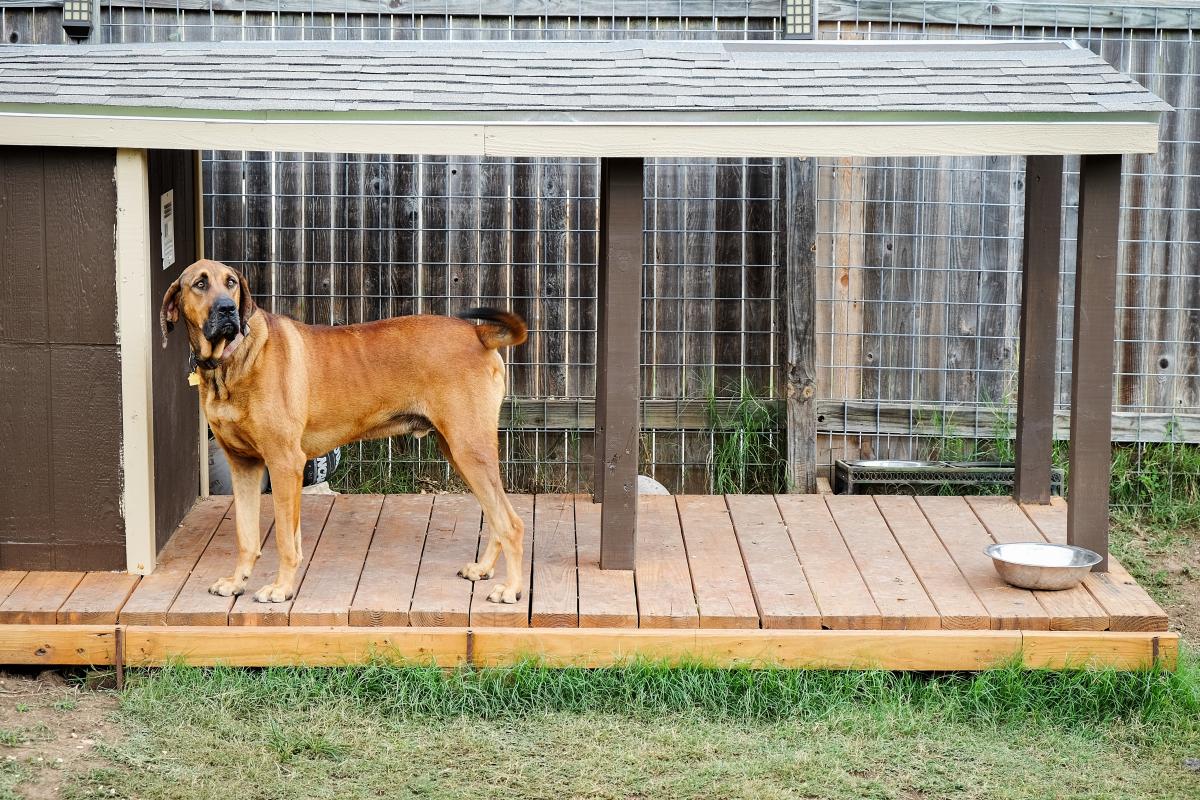
Paula built a deck for her dog house using repurposed wooden pallets.
What's been the toughest part?
The toughest part has been changing people’s perception about recycling and reuse. Through the Zero Waste Block Leader Program, I’ve talked to a lot of people about recycling. You would be amazed at the number of people who live in our community who won’t recycle because they don’t see an immediate personal benefit for them. A few have even said to me, “I don’t get paid to recycle.” It just blows my mind. If you stop to consider it, you really can get “paid” for recycling. Last year, I saved almost $300 by downsizing my trash bin and adding a second blue recycling bin for free. Saving money happened to be an added bonus to recycling more.
Have there been any unexpected benefits?
The greatest benefit has been that my actions are rubbing off on my family. What started out as something that only I did has now become standard practice in our home. Yes, I still do random contamination checks and swap recyclables for trash and vice versa, but the effort is there, and I can’t ask for anything more. As a “green team,” we’ve come a long way as a household. One time, my sons contaminated my composting container, and it became filled with maggots. It was so bad that I had to dump it all out, scrub down the container, and start my collection all over. That was such a disgusting situation to walk into, but the moment I realized that this horror was a result of someone trying, I couldn’t be anything but proud. Since then, I have posted new signage on everything, which has helped.
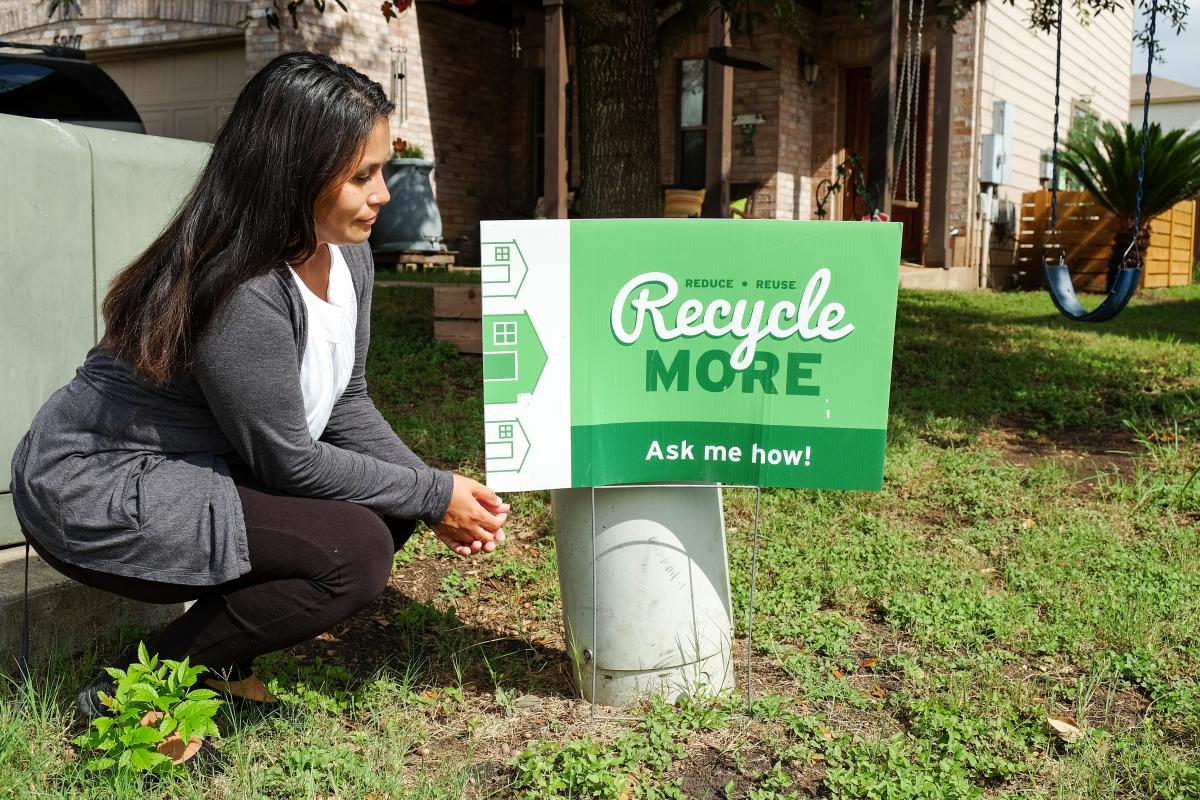 |
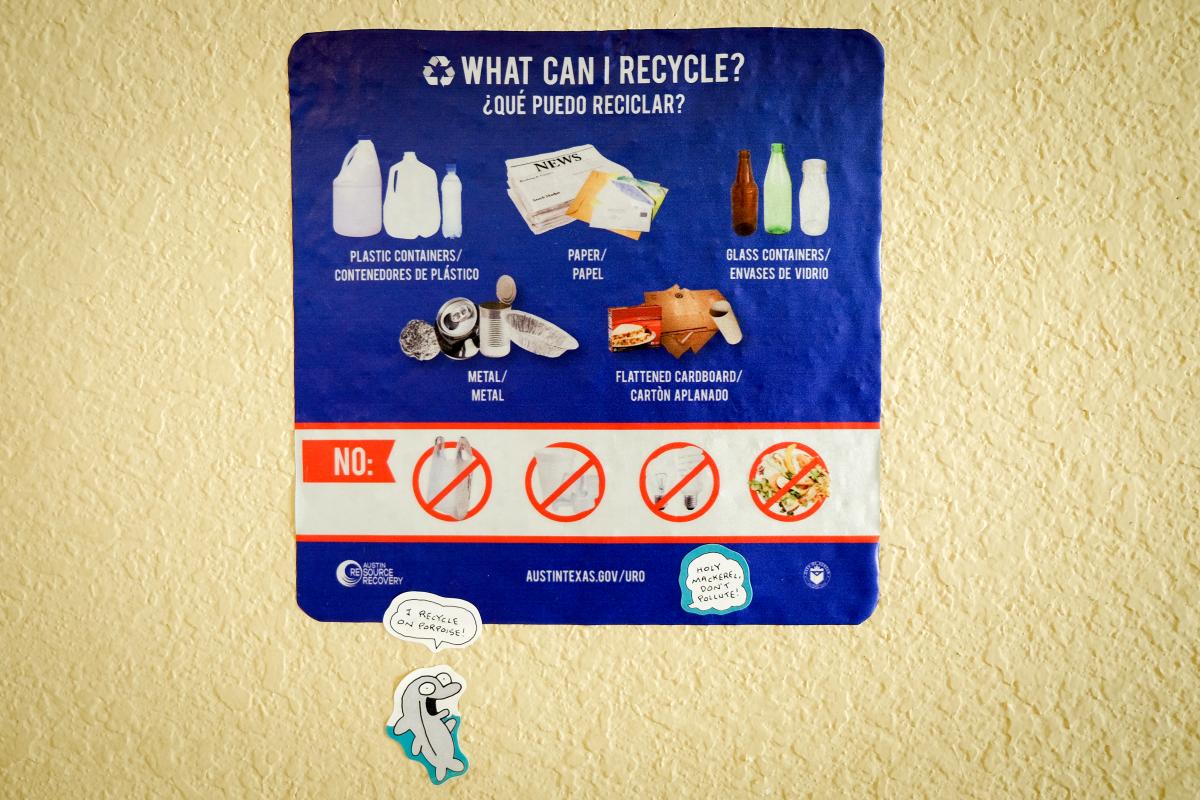 |
Left: As a Zero-Waste Block Leader, Paula displays signage in her yard inviting neighbors to ask her about recycling; Right: Paula adds friendly reminders around her house to encourage recycling and composting by family members.
What advice do you have for others?
My advice is to be mindful in your everyday routine. When you’re getting ready to toss out your food scraps, your Topo-Chico bottle, or an old table with a loose leg, remember that almost everything is salvageable, recyclable, or reusable — and if it isn’t, you should try to dispose of it properly. The City of Austin has a drop-off center where you can drop off and pick up items that have no business in the landfill. But, remember that this is not only our City’s issue, but an issue that will affect the condition we leave our earth in for generations to come.
I spent most of my adult life not thinking about where things went when I put them in the trash. Now, I feel a strong sense of responsibility, not only to make more of an effort, but to help educate people on the small things they can do to live more sustainably. Start small and stay consistent in whatever you do, because it’s going to take a whole lot of us doing small things to make a big difference. So, let’s strive to be better stewards of this earth and to take care of one another.
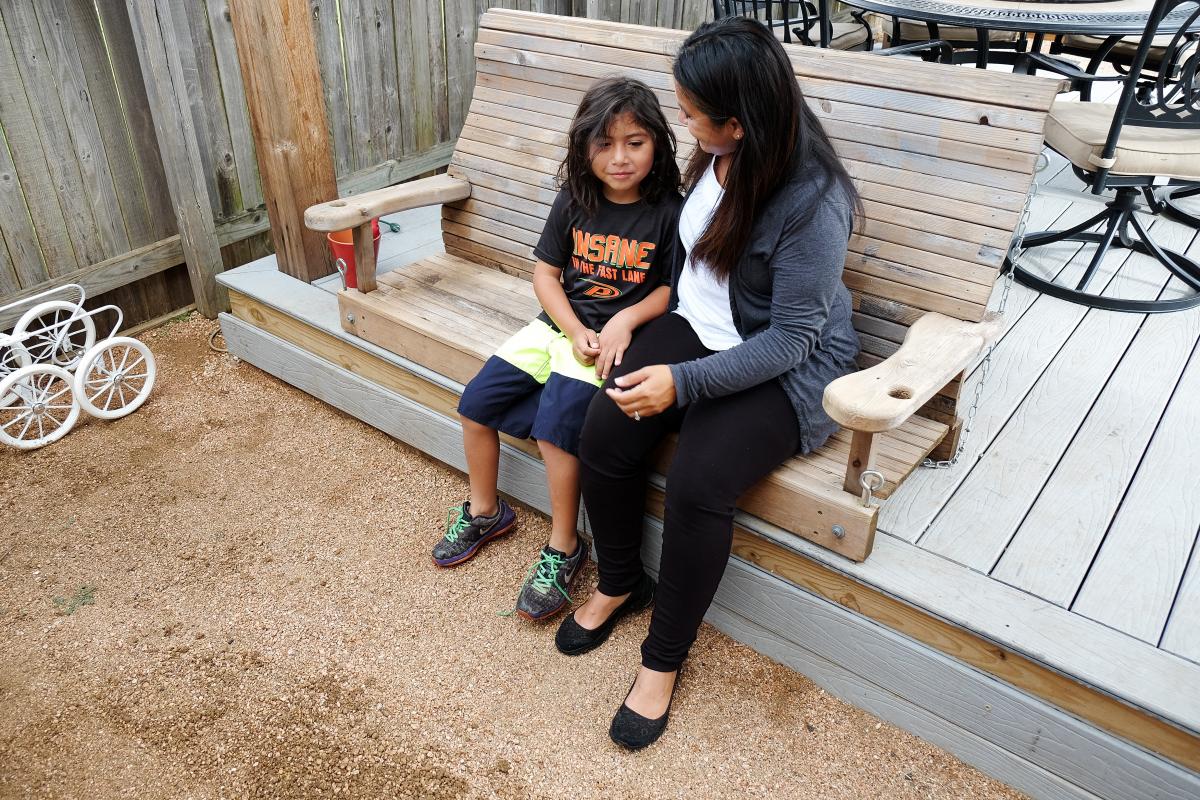 |
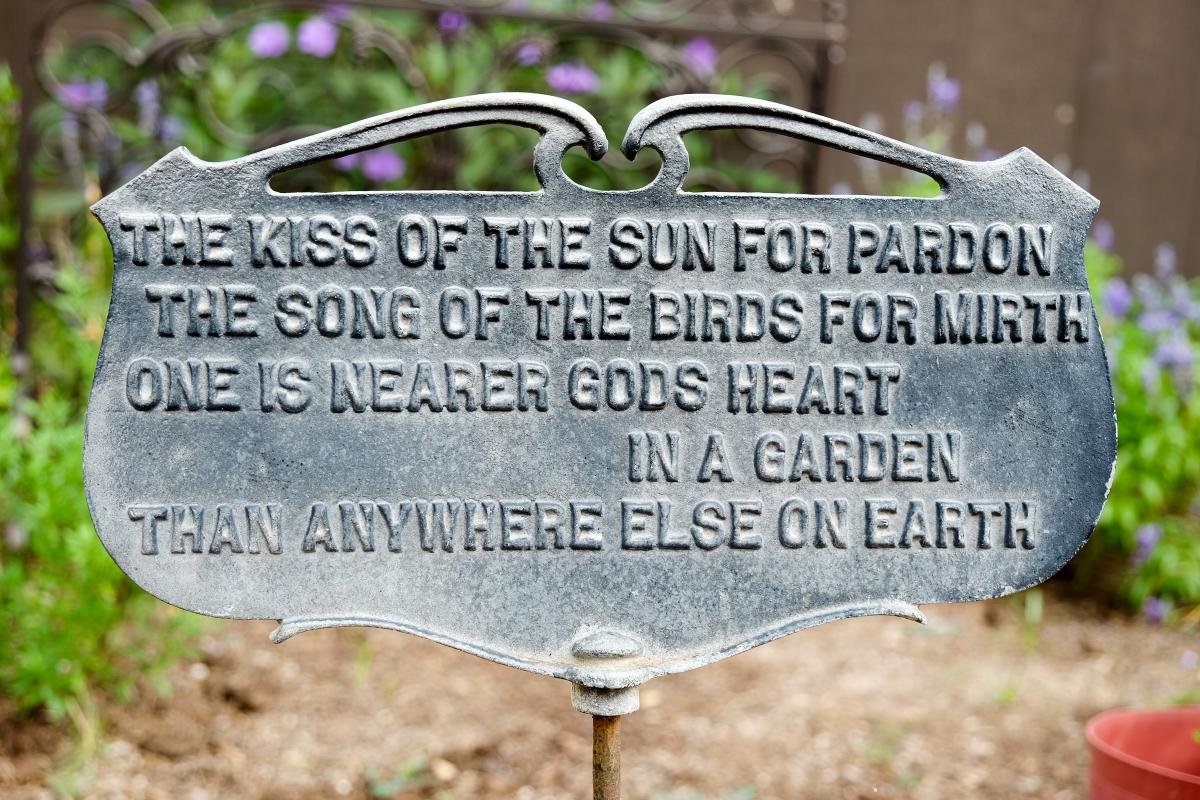 |
Left: Paula and her son sitting on a wooden bench; Right: A sign in the garden.
To learn more about Austin's net-zero goal and the actions you can take to support a greener community, view the Austin Climate Equity Plan.
Share your Net-Zero contributions with us on X (formerly Twitter) or Facebook, and use #NetZeroHero. If you know a Net-Zero Hero (or heroes!) who should be recognized for their efforts, send your nomination to climate@austintexas.gov.

